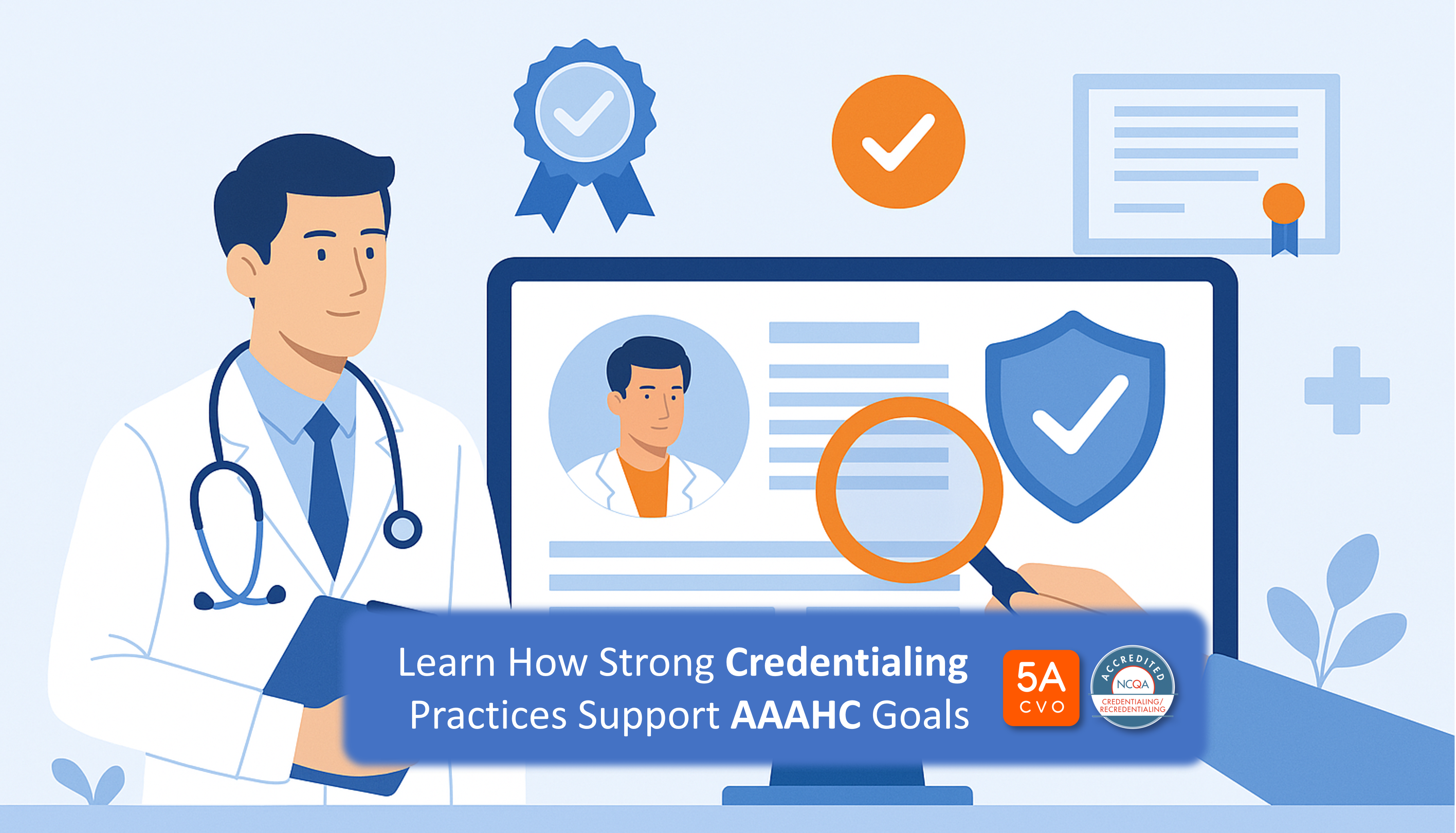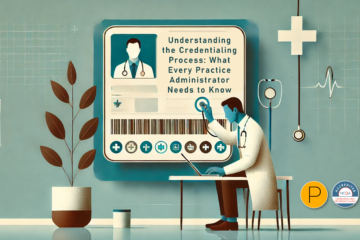Healthcare professionals encounter numerous challenges and considerations when establishing or maintaining a successful practice. Among the crucial factors in this journey are the processes of credentialing and contracting. These two elements play pivotal roles in a provider’s professional trajectory, and comprehending their intricacies is essential for sustainable success.
Distinguishing Between Credentialing and Contracting and Their Significance
Healthcare providers grapple with the distinctions between credentialing and contracting and their respective significance. This article endeavors to address these questions and others, aiding in navigating the intricate landscape of provider enrollment.
The Essence of Credentialing
Credentialing, often referred to as primary source verification, entails meticulously validating a provider’s educational background, professional experience, and training. Despite its apparent simplicity, this undertaking is frequently intricate.
Traditional credentialing, similar to other facets of provider enrollment, is a multifaceted process. Typically, it encompasses a meticulous execution of 52 distinct actions to prepare a file for presentation.
These actions encompass some 52 traditional credentialing action items, including:
- Facilitating the transmission, monitoring, and reception of the provider’s application packet.
- Acquiring the provider’s consent.
- Obtaining privilege forms.
- Reviewing the disclosure’s questions and responses.
- Substantiating medical school internships, residencies, fellowships, and affiliations.
- Scrutinizing explanations for gaps in timelines and claims histories.
- Evaluating the history of medical malpractice claims.
- Investigating disciplinary actions concerning primary and out-of-state licenses.
- Securing a copy of the provider’s current insurance certificate.
- Verifying the absence of sanctions or exclusions from Medicare and Medicaid.
- Conducting a 10-year criminal background check.
- Conducting a query on the National Practitioner Data Bank.
The Importance of Credentialing
Credentialing serves to safeguard patients and practices by mitigating the risk of medical errors attributed to incompetent providers. Additionally, it enhances the reputation and credibility of practices and healthcare entities within the medical community and among providers.
In the context of provider enrollment, proper credentialing enables insurance companies to reimburse providers for their services. Absent proper completion of credentialing procedures, providers are precluded from receiving remuneration for the services rendered.
Ramifications of Incorrect Credentialing
Failure to perform credentialing accurately can engender a range of negative consequences:
- Legal and Regulatory Implications: Incomplete or incorrect credentialing can lead to noncompliance with legal and regulatory obligations, exposing providers and organizations to potential legal ramifications and penalties.
- Safety Concerns: Inaccurate credentialing increases the likelihood of unskilled or unqualified providers delivering substandard care, endangering patient safety and potentially triggering medical malpractice litigation.
- Billing Complications: Insurance companies have the authority to reject payment for services provided by providers lacking proper credentials, resulting in financial setbacks for healthcare organizations.
- Reputational Damage: Flawed credentialing can erode the reputation and credibility of healthcare providers and organizations, eroding patient trust and impacting overall reputation.
Understanding Contracting
Following credentialing, the contracting phase is initiated by payors who send contracts to providers for review and endorsement. Upon the provider’s acceptance and signing, the plan countersigns the contract. With the completion of the contracting process, the plan proceeds to initiate the loading process, establishing a designated commencement date for the provider to begin accepting covered patients and begin billing.
This general process is replicated for each payor, including Medicare and Medicaid, ensuring comprehensive contractual agreements with each respective entity.
The Significance of Contracting
Contracting is indispensable for healthcare providers seeking accurate and timely remuneration.
Consequences of Inaccurate Contracting
Flawed contracting can lead to a range of undesirable outcomes:
- Payment Delays or Denials: Insurance companies may delay or refuse payments due to incorrect contracting, disrupting the provider’s cash flow and financial stability.
- Inadequate Reimbursement Rates: Failure to negotiate suitable reimbursement rates during the contracting process can result in reduced payments for services provided, impacting the provider’s revenue and profitability.
- Compliance Issues: Improper contracting may lead to noncompliance with contractual and regulatory obligations, exposing the provider to the risk of legal disputes, penalties, or contract breaches.
- Limited Network Participation: Incorrectly executed contracts can result in limited network participation or exclusion from specific health plans, restricting the provider’s access to a broader patient population and hindering patient attraction efforts.
- Administrative Burdens: Contracting errors necessitate providers to handle tasks such as contract amendments, clarifications, or disputes, consuming valuable time and resources of the provider’s staff.
Delineating the Distinction Between Credentialing and Contracting
In essence, credentialing involves the meticulous scrutiny of qualifications to ensure competence and proficiency. At the same time, contracting is the active pursuit and acquisition of participation contracts with insurance plans, facilitating seamless reimbursement.
The Integration of Credentialing and Contracting in Provider Enrollment
Providers engage in provider enrollment, also known as payor enrollment, by applying for and contracting with health plans, networks, and Medicare and Medicaid.
Successful completion of the enrollment process renders providers eligible for payment for medical services. Credentialing and contracting represent the initial and concluding stages of this process.
A quick summary shows that provider enrollment consists of three stages involving credentialing and contracting:
- Stage 1: Credentialing. As previously discussed, this step encompasses the validation of educational background, legal authorization, and medical practice competency.
- Stage 2: Payor Application. Following credentialing, eligible providers can submit applications, along with required documentation, to payors. The specifics of this process may vary depending on the health plan or organization.
- Stage 3: Contracting. Upon application approval, providers can negotiate reimbursement rates and review contractual terms and participation obligations. Negotiations may ensue if reimbursement rates do not align with expectations. Once the provider signs and returns the credentialing agreement, a provider number and an effective date are issued. This marks the initiation of billing within the plan and the receipt of in-network reimbursement for claims.
Simplifying Provider Enrollment through Delegated Credentialing
Delegated credentialing, also known as delegated provider enrollment, streamlines the provider enrollment process by involving agreements between health plans and networks. This approach expedites provider enrollment, rendering the process more efficient and enabling expedited billing.
Three Benefits of Delegated Credentialing
- Reduced Errors and Risks: Provider enrollment necessitates meticulous attention to detail, with even minor errors potentially impacting a provider’s profitability and reputation. Delegated credentialing experts can manage the process efficiently and with minimized risk.
- Reduced Staff Burden: Office staff often shoulder the responsibility of credentialing, diverting their attention from essential tasks and sometimes even affecting patient care. Delegating credentialing to experts allows staff to focus on critical areas, potentially reducing overhead costs.
- Enhanced Assurance: Delegated credentialing instills confidence in providers and practices. With experienced professionals overseeing the process, staff can concentrate on their core competencies, ensuring enrollment is in capable hands.
Credentialing and Contracting FAQ
Is privileging the same as credentialing?
No, privileging and credentialing are distinct. Privileging pertains to authorizing healthcare workers to provide specific patient care services based on their credentials and performance. Credentialing is a prerequisite for granting privileges.
How can I determine if I’m already credentialed?
Contacting your insurance company to ascertain your credentialed status under a group or individual contract is advisable.
What distinguishes group and individual contracts?
Group contracts pertain to contracts with multiple providers, whereas individual contracts involve a single provider. In the case of group contracts, the contract remains with the group even if an individual provider leaves. In contrast, individual contract providers can retain their contract upon leaving a group.
Is re-credentialing necessary upon joining a new practice?
Yes, new practices require providers to undergo the complete credentialing process. Maintaining a list of previous insurance and health plan credentialing can expedite the process.
What is a CVO (Credentials Verification Organization)?
CVOs collaborate with healthcare organizations to verify providers’ new and existing credentials. CVOs streamline the verification process and promote compliance with regulations.
Should I use a CVO?
Engaging a CVO offers multiple benefits, including cost savings, access to expertise, and a reduction in non-profit-producing activities.
Three benefits of using a CVO include:
- Financial savings: Proper credentialing can help providers enroll in health plans and networks faster, leading to more billing opportunities. Outsourcing credentialing to a CVO can save providers and their organizations money. Medical organizations can improve their financial performance by cutting costs and generating more revenue.
- Access to experts: A credentialing team that is highly effective can reduce mistakes and increase patient safety. This is because they can identify and address potential problems before they occur. For example, they can check to ensure that providers have the necessary licenses and certifications and that they are not under any disciplinary orders.
- Fewer non-profit-producing activities: The 52-step credentialing process can be time-consuming and labor-intensive, taking practice staff away from other essential tasks. Credentialed providers can bring in revenue, but unforeseen credentialing delays can lead to lost revenue and billing opportunities. A CVO can help to free up office staff to focus on other revenue-generating activities.
What information can typically be found in a contract?
- Billed services rates and associated costs
- The deadline to submit reimbursement claims
- Payor’s time frame for reimbursing providers upon claim receipt
- Covered services
- Details regarding regulatory requirements and relevant laws
- Dispute process for claim denials by the provider
- Medical necessity criteria and prerequisites for eligible services
- Notification period for contract termination by either party
- Provider networks and participation requirements
How do I know when a contract ends?
Contracts should explicitly state the expiration date and the provisions for early termination by either party.
Charting the Path to Provider Success
Navigating the intricate landscape of credentialing and contracting presents considerable challenges. However, this article has offered foundational insights to providers. While these insights are comprehensive, individual providers may face unique challenges.
Seeking expert assistance can alleviate burdens and streamline the provider enrollment journey. Enlisting the expertise of enrollment specialists empowers providers to prioritize patient care while ensuring timely billing for services rendered.
More information about 5ACVO
5ACVO is NCQA Credentialing Accredited specializing in credentialing and primary source verification and is part of the Fifth Avenue Healthcare Services family.
5ACVO sister companies include Fifth Avenue Agency (MPLI and medical malpractice insurance specialists) and Primoris Credentialing Network (credentialing and provider enrollment specialists with 54+ health plan and network provider enrollment options).
5ACVO initially published this article here. For more information on 5ACVO, please visit 5ACVO.com or Contact Us.

















